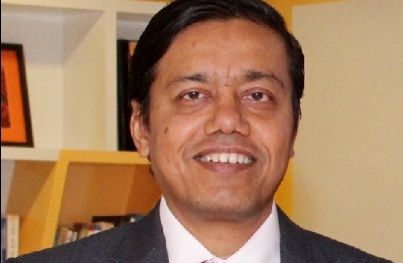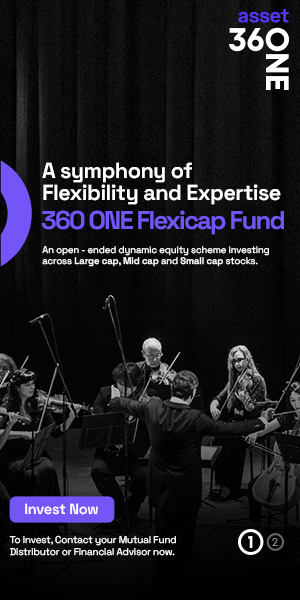It is a very good time for the long term investments in equities
BFSI Industry Interview

Neelotpal Sahai is Head of Equities and Fund Manager since September 2017. He has been a Senior Vice President and Portfolio Manager in the Onshore India Equity team in Mumbai since 2013, when he joined HSBC. Neelotpal is responsible for managing three HSBC Mutual Fund equity funds. Neelotpal has been working in the industry since 1991. Previously, Neelotpal was Director at IDFC Asset Management Company Ltd in Mumbai, responsible for equity fund management, and held a variety of positions at Motilal Oswal Securities Ltd. in Mumbai, Infosys Technologies in Mumbai, Vickers Ballas Securities Ltd. in Mumbai, SBC Warburg in Mumbai, UTI Securities Ltd. in Mumbai and HCL HP Ltd. in Mumbai. Neelotpal holds a Bachelor’s degree in Engineering from IIT BHU – Varanasi and a Post-Graduate Diploma in Business Management from IIM Kolkata, both in India.
The stock market (Nifty) has been range-bound for the last 3 to 4 months. Do you expect a big unidirectional move once Lok Sabha election results are announced? How much bearing will election results have on near to medium term prospects of the stock market?
Clearly, the upcoming general elections are weighing on the markets. There could be volatility in the equity markets in the run-up till the election outcome and more so with the geo-political factors also coming in to the picture now. That apart, as we have seen in the past, the election outcome tend to have a bearing on the equity market performance only in the near term (or in the run-up till the election outcome). However, post the election process, the market participants are expected to focus back on the inherent fundamental strength of the economy, which continues to remain strong. We feel that the year ahead could be a year of two halves with first half characterised by volatility on the back of the general election cycle and in the second half we should see fundamental factors taking over and influencing the equity market performance.
Emerging markets have underperformed in the last 1 year and within the emerging market basket, India has really underperformed. Do you expect a reversal in relative performance from emerging markets, especially India?
If we analyse the market performance data for calendar year 2018, MSCI India index has actually outperformed MSCI Emerging Market index. MSCI India index USD was down 8.8% (while it delivered flat returns on INR basis due to depreciation versus the USD), while the MSCI EM index was down 16.6% and the MSCI World index was down 10.4% during 2018. So while EMs as a basket has underperformed MSCI World index and US equities during 2018, India has done relatively well and outperformed the EM basket. From an EM basket point of view, 2018 was a difficult year on the back of macro-economic concerns, rising global trade worries, interest rate hikes in the US and a significant weakening in most EM currencies versus the USD. 2019 has started off on a better note and most of the key headwinds of 2018 are not major worries at this juncture. With growth slowdown concerns in the developed markets coupled with a likely moderation in the US interest rate hikes, emerging markets could be at the forefront of the consideration set for global investors during 2019. Valuation of the EM basket is now more favourable given the underperformance in the past year. India’s relative valuations within the EM basket is now on the higher side as a result of a better relative performance during 2018. However, India is the fastest growing emerging as well as the major economy and that puts the country in a sweet spot in the year ahead. A key aspect to consider in the context of relative valuations is the strong corporate earnings recovery trajectory expected in India and fundamental factors should drive investor decisions once the general elections related uncertainty is out of the picture.
Corporate earnings in Q3 were largely in line with street expectations. The financial media reported that top-line growth was at multi-quarter highs. Do you expect earnings to grow faster in the coming quarters? What is your outlook on corporate earnings in FY 2020?
The corporate earnings recovery is clearly underway and the underlying trends from the 3QFY19 results season are healthy and provides confidence of an improving trajectory from hereon. Earnings at a broader level have remained weak in the recent years and that provides a favourable base for the growth trajectory to improve going into FY20. We sense that the financials led by corporate banks will drive the earnings growth momentum in the coming year followed by other segments. Overall, we believe that the earnings story is on track to see a meaningful acceleration over the next 2-3 years driven by a favourable base as well as a genuine uptick in domestic demand and consumption.
The last 12 months were very difficult for the midcap and small cap segments of the market. What is your outlook on midcaps in the medium term? Are there attractive investment opportunities in the midcap segment?
If we take a step back and look at mid and small caps basket at the start of 2018, the scenario was meaningfully different to what it is now. The correction in mid and small caps was as a result of valuations (in late 2017 / early 2018), running ahead of actual earnings delivery / expectation coupled with headwinds from increase in commodity prices especially global crude oil and INR depreciation. However, the situation is different now with valuations at an aggregate level and for individual stocks in the space coming off significantly and the premium of mid / small cap indices over large caps, which had reached unsustainable levels then, now moving to very reasonable levels. So in the backdrop of the stark underperformance in the mid and small cap indices to that of large cap indices in 2018 and which has continued through the first two months of 2019 as well, we see a potential case for a mean reversal going ahead. With global crude oil prices staying within a range coupled with a stable INR, the margin performance of the mid and small caps names could see improvement in the coming quarters. The sharp correction in some of the small and midcap names in the past year has thrown up some good investment opportunities, which are now available at more reasonable valuations.
The large and midcap equity fund category is a relatively new term for retail investors, after SEBI’s mutual fund re-classification directive, even though there may have funds schemes in the past which had a similar investment strategy. For the benefit of retail investors, please explain in brief the investment mandate for this particular category?
The large and mid cap category, mandates at least 35% in large cap and 35% in mid cap, with the balance 30% to be allocated at the discretion of the fund manager across large and mid caps or even small caps as per the view of the fund manager. If we take the case of large cap or midcap funds, then the mandates are different. In large cap funds, at least 80% of portfolio has to be in large cap stocks – which is the top 100 companies by market cap. Likewise for mid cap funds, at least 80% has to be in mid cap stocks – which are stocks ranked 101 to 250 by market cap. So there is a lot more flexibility to the fund manager in a large and mid-cap fund compared with the mandates of large cap funds or mid cap funds.
Please share with our readers the investment strategy for your upcoming NFO – market cap segment wise allocation strategy and stock selection strategy?
The fund will have exposure to two market cap classes viz Large and Mid Caps to strike the right balance between Stability and Growth. The fund will always hold minimum 35% of the corpus in Large Cap companies, while another minimum 35% will be deployed in Mid Cap companies. There is a provision which allows the fund to invest 0% to 30% in other than Large and Mid Cap companies and 0% to 20% in Debt & Money Market instruments (including Cash & Cash equivalents). A mix of top down and bottom up approaches will be used to invest in equities. The fund will follow a sector agnostic style of investments with a strategy to build an actively managed diversified portfolio of Large and Mid Cap stocks. Our investment philosophy and portfolio construction follows the proprietary profitability and valuation framework. The emphasis is on identifying companies that are attractively valued relative to their sustainable profitability.
Large and Mid cap fund provides an added advantage to the fund manager to build a portfolio by taking into account key strengths / weakness of both market cap segments especially from a sector allocation perspective. For example, if the view supports a larger allocation to private banks, then one can look to allocate to large cap names while in sectors / segments such as consumer discretionary where mid cap names provide better potential, then the portfolio can be structured taking this perspective. So essentially, Large and Mid cap fund provides better flexibility compared to pure Large cap fund or Mid cap fund, to undertake an optimal sectoral diversification in the portfolio so as to efficiently capture investment opportunities available from time to time.
In our existing funds (large cap and multi cap portfolios) we are currently overweight on private financiers and consumer discretionary themes. We also have overweight positions in materials and industrial names as well.
HSBC Large and Mid Cap Equity Fund will follow a process driven approach to selecting investment ideas as well as portfolio construction. As is the case with other HSBC funds, it will employ the proprietary Valuation vs. Profitability approach to identify and invest in companies that are attractively valued relative to their sustainable profitability. This approach helps in screening companies from a large investment universe on the basis of Profitability (ROE) and Valuations (Price to Book Value or PB).
What should investors keep in mind when selecting large and midcap funds for their investment portfolios? Who should invest in your upcoming NFO? What is your advice regarding investment tenor to investors who may subscribe to your NFO?
HSBC Large and Mid Cap Equity fund (HLMEF) is placed below Mid, Small Cap and Thematic funds in the risk return grid. The fund is best suited to discipline equity investors, who are looking for an optimal market cap allocation between Large and Mid Caps to achieve better risk adjusted performance. HLMEF is suited for aggressive and moderately aggressive investors as it can provide above average return potential with relatively less volatility. Equities can deliver above average performance over the long term whereas subject to short term volatility. Investment in equities in general are recommended for longer periods such as 5 years and above.
The Large and Mid cap fund category is a completely new one formed after the SEBI reclassification of fund categories. Most of the existing Large and Mid cap funds have come into existence after undergoing reclassification of existing funds which were following different market cap strategies earlier. Hence most of these funds were not pure Large and Mid Cap Funds previously. From that perspective, HSBC Large and Mid Cap Equity Fund will be one of the few ‘true to label’ Large and Mid Cap Funds from the beginning itself.
What is your advice for investors in the current market conditions?
We continue to derive confidence in an improved macroeconomic scenario for the country, which is a meaningful shift from most part of 2018, when emergence of macroeconomic headwinds dominated market discourse. Crude oil prices have come off from the peak levels seen in 2018 and even though it may continue to remain volatile, the current levels should not pose risks on the macroeconomic front. Inflation levels continue to remain benign and a stable crude oil price environment will further help on this front. RBI decision to reduce policy rate in the February meeting and a shift to a ‘neutral’ stance is indeed a meaningful change from the position adopted by the Central Bank through 2018 and we may be now looking at a rate easing phase from now on. The quarterly earnings season though were mixed at the headline level but has shown promising underlying trends. This provides confidence that the corporate earnings recovery trend is expected to improve going into FY20. Additionally, the rate easing phase if undertaken by the RBI, should help to accelerate the corporate profitability recovery cycle. The general elections outcome in May 2019, however will remain a key event to watch out for in the near term. There could be volatility in the equity markets in the run-up till the election outcome and more so with the geo-political factors also coming in to the picture now. That apart, as we have seen in the past, the election outcome tend to have a bearing on the equity market performance only in the near term (or in the run-up till the election outcome). However, post the election process, the market participants are expected to focus back on the inherent fundamental strength of the economy, which continues to remain strong. With inflation remaining benign and global crude oil prices remaining within a range, the rate easing cycle could gather momentum going forward. This will again be positive for equity markets in the medium term.
As per our analysis, equities as an asset class has delivered 16% CAGR over the past 40 years on a five year daily rolling frequency and has comfortably beaten other asset classes such as debt and gold.We have heard that any time is the right time to invest in equities. But the current trend of low inflation, earnings growth improvement and reasonable valuation makes it a very good time for the long term investments in equities.

Disclaimer
This document provides a high level overview of the recent economic environment. It is for marketing purposes and does not constitute investment research, investment advice or a recommendation to any reader of this content to buy or sell investments. It has not been prepared in accordance with legal requirements designed to promote the independence of investment research and is not subject to any prohibition on dealing ahead of its dissemination.
This document has been prepared by HSBC Asset Management (India) Private Limited (HSBC) for information purposes only and should not be construed as an offer or solicitation of an offer for purchase of any of the funds of HSBC Mutual Fund. All information contained in this document (including that sourced from third parties), is obtained from sources HSBC, the third party believes to be reliable but which it has not independently verified and HSBC, the third party makes no guarantee, representation or warranty and accepts no responsibility or liability as to the accuracy or completeness of such information. The information and opinions contained within the document are based upon publicly available information and rates of taxation applicable at the time of publication, which are subject to change from time to time. Expressions of opinion are those of HSBC only and are subject to change without notice. It does not have regard to specific investment objectives, financial situation and the particular needs of any specific person who may receive this document. Investors should seek financial advice regarding the appropriateness of investing in any securities or investment strategies that may have been discussed or recommended in this report and should understand that the views regarding future prospects may or may not be realized. Neither this document nor the units of HSBC Mutual Fund have been registered in any jurisdiction. The distribution of this document in certain jurisdictions may be restricted or totally prohibited and accordingly, persons who come into possession of this document are required to inform themselves about, and to observe, any such restrictions.
© Copyright. HSBC Asset Management (India) Private Limited 2019, ALL RIGHTS RESERVED.
HSBC Asset Management (India) Private Limited, 16, V.N. Road, Fort, Mumbai-400001
Email: hsbcmf@camsonline.com
Mutual fund investments are subject to market risks, read all scheme-related documents carefully.
Recent Interviews
-
In conversation with Mr Pratik Oswal Chief of Passive Business of Motilal Oswal MF
Jan 6, 2026
-
In conversation with Mr Nilesh Jethani Fund Manager Equity with Bank of India Mutual Fund
Jan 6, 2026
-
Partner Connect by Advisorkhoj with Mr Amit Kalra Glorious Path Pvt Ltd New Delhi
Dec 5, 2025
-
Partner Connect by Advisorkhoj with Mr Alok Dubey PrimeWealth Pune
Dec 1, 2025
-
In Conversation by Advisorkhoj with Ms Aparna Shanker Chief Investment Officer Equity The Wealth Company Mutual Fund
Nov 28, 2025
Fund News
-
Sundaram Mutual Fund launches Sundaram Income Plus Arbitrage Active FoF
Jan 5, 2026 by Advisorkhoj Team
-
Kotak Mahindra Mutual Fund launches Kotak Dividend Yield Fund
Jan 5, 2026 by Advisorkhoj Team
-
Motilal Oswal Mutual Fund launches Motilal Oswal Diversified Equity Flexicap Passive Fund of Funds
Jan 2, 2026 by Advisorkhoj Team
-
Mr. Navneet Munot's 'Person of the Year 2025'
Dec 31, 2025 by HDFC Mutual Fund
-
Zerodha Mutual Fund launches Zerodha Nifty Short Duration G Sec Index Fund
Dec 26, 2025 by Advisorkhoj Team





